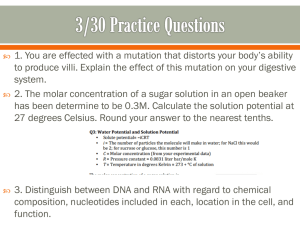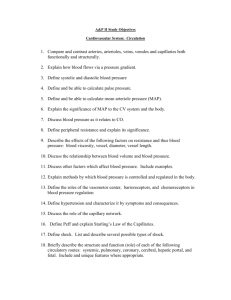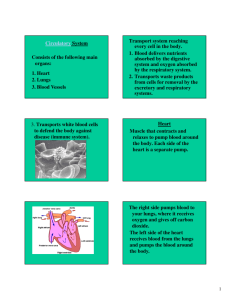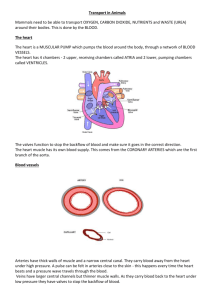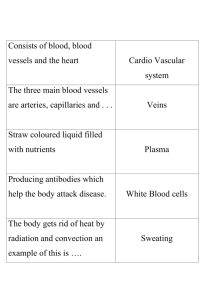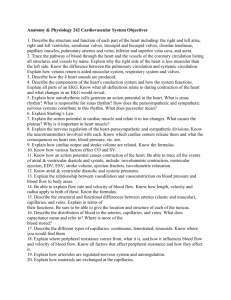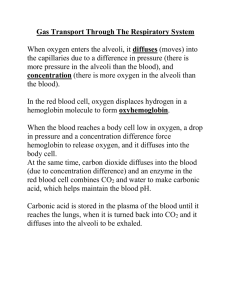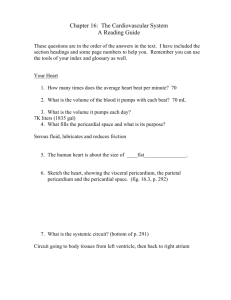File
advertisement
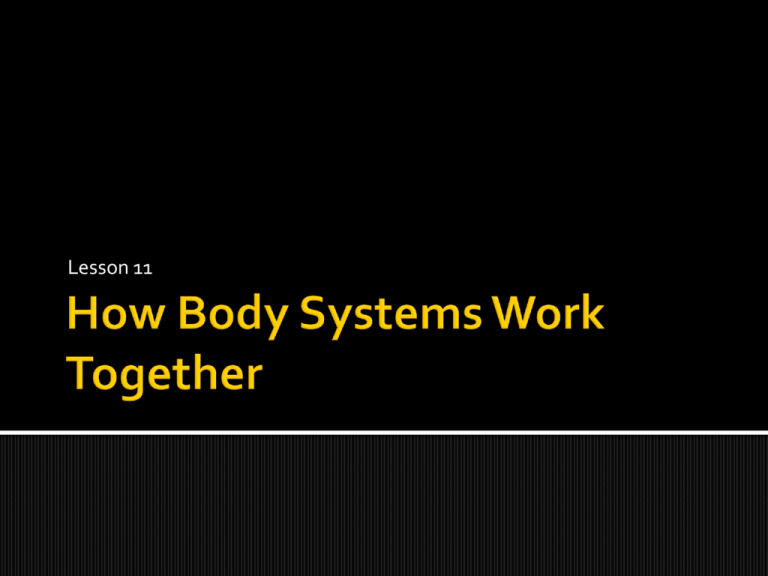
Lesson 11 When exercising, breathing becomes heavier and faster. The heart also beats faster. Why do both systems start to work harder? As we increase effort, our cells need more oxygen and nutrients. Blood supplies the needed nutrients and oxygen. Oxygen is absorbed into the blood in the lungs. Blood is pumped from the right ventricle to the lungs where it picks up oxygen. The blood then travels back to the heart where it is pumped from the left ventricle to the body cells. Inside each lung, there are tiny air sacs called Alveoli. The alveoli are surrounded by capillaries, which are very small blood vessels that connect the arteries and veins. The alveoli and capillaries have very thin cell membranes. The oxygen passes through the membrane of the capillary into the blood. Carbon dioxide moves in the opposite direction. The gas moves from the blood into the alveolus. Colour the parts of the respiratory system green and the parts of the circulatory system red. Oxygen moves from the alveoli into Blood Carbon dioxide moves from capillaries into Alveoli Humans eat food and drink fluids to supply our body cells with more energy. Nutrients enter the blood from the small intestine. The blood carries nutrients to the body cells. Wastes pass from the cells back into the blood. The wastes leave the body. On the inside wall of the small Intestine, there are many villi, which look like tiny fingers. Inside the villi, there are many capillaries. The villi and capillaries have very thin cell membranes. The nutrients pass through the villi into the capillaries. Waste products from the body cells pass into the capillaries before the body gets rid of them. Colour the parts of the digestive system yellow and the parts of the circulatory system red. How do nutrients pass into the blood? They pass through the villi into the capillaries In what way are villi and alveoli similar? They are both use capillaries to transport materials that cells need. They both use capillaries to get rid of waste.

